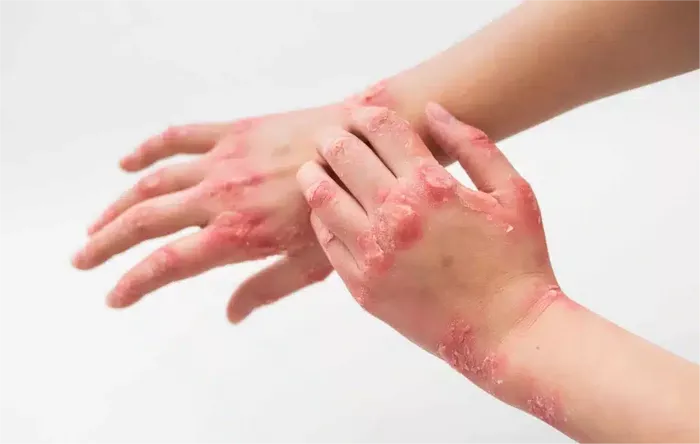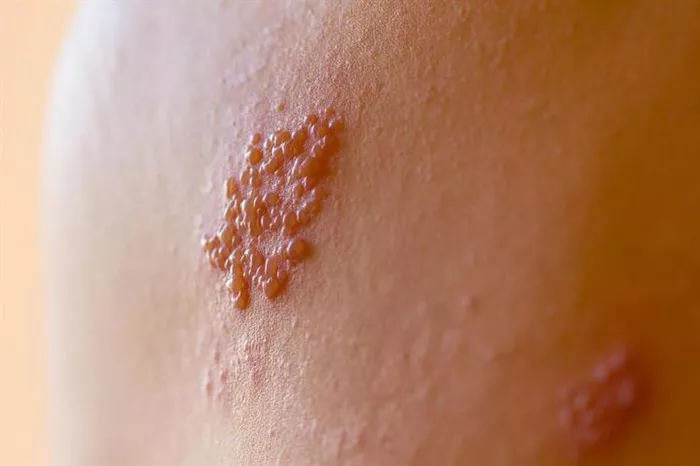Ringworm is a common fungal infection that affects the skin, hair, and nails. Despite its name, ringworm is not caused by a worm but by a fungus. The infection gets its name from the round, ring-shaped rash it creates on the skin. While ringworm can be treated with antifungal medications, many people wonder if the infection expands during the healing process. Understanding how ringworm heals and the behavior of the infection during recovery is important for managing and treating it effectively.
What is Ringworm?
Ringworm, also known as tinea, is a fungal infection caused by dermatophytes, a group of fungi that thrive in warm, moist environments. These fungi can live on the outer layer of skin, hair, and nails, leading to red, itchy, and circular patches on the skin. Ringworm can occur anywhere on the body, but it is most commonly found on the scalp, feet (athlete’s foot), groin (jock itch), and nails.
The infection spreads through direct contact with an infected person, animal, or contaminated surface. It is highly contagious, and because it is so easily spread, it’s important to understand the healing process to prevent further infection.
How Does Ringworm Appear?
The hallmark sign of ringworm is the circular rash with raised, red edges and clear skin in the middle. This ring-like appearance gives the infection its name. Over time, the rash can grow in size, and the edges can become more pronounced, while the center may start to clear up as the body fights off the infection.
When you first notice a ringworm infection, the area might be small and itchy, with some redness and discomfort. As it progresses, the patch may grow larger and cause more itching or irritation. If left untreated, it can spread to other parts of the body or other people.
Does Ringworm Expand When Healing?
It is a common misconception that ringworm will expand when it starts to heal. In fact, healing ringworm usually shows signs of improvement, including a reduction in size and the rash fading away. However, in some cases, the appearance of ringworm during the healing process may seem as though it is expanding or getting worse before it gets better.
Here’s why:
Initial Spread Before Healing: When ringworm first develops, it may appear to expand outward, forming a larger ring. This can be confusing because, during the healing process, the rash may initially grow before the center clears up. This outward spread doesn’t necessarily mean the infection is worsening. Instead, it could be the body’s immune response fighting the fungus, as the edges of the ring often show more inflammation as the body tries to contain the infection.
Antifungal Treatment: Ringworm is typically treated with topical antifungal creams, powders, or oral antifungal medications. These treatments begin to work by killing the fungus, but they can sometimes cause irritation or cause the rash to appear more pronounced in some cases. This might look like the infection is spreading, but it’s often just the initial reaction to the antifungal treatment. Over time, with consistent treatment, the infection begins to shrink, and the rash starts to heal.
Fungal Infection Behavior: Fungal infections like ringworm can sometimes react unpredictably. The infection may seem to worsen temporarily before it gets better. This can happen if the fungus spreads to nearby areas of the skin or if the immune system is still working to contain the infection. Even though it seems to expand, this is part of the healing process.
Secondary Infection or Irritation: Another reason ringworm may appear to expand is due to a secondary bacterial infection or irritation caused by scratching. When you scratch an itchy ringworm rash, you may inadvertently spread the fungus to other areas of your skin. Additionally, open sores from scratching can become infected with bacteria, which may cause more swelling, redness, or a larger area of irritation. This makes it seem like the ringworm infection is expanding, but it’s often an additional issue.
What Does Healing Ringworm Look Like?
When ringworm begins to heal, it usually follows a specific pattern:
Reduction in Redness: The redness around the edges of the ring typically starts to fade as the antifungal treatment works. This is one of the first signs that the infection is healing.
Clearing in the Center: As the fungus dies off, the center of the ring may begin to clear, and the skin underneath starts to look normal again. The skin may appear dry or flaky as it heals.
Itching Reduces: One of the most noticeable symptoms of ringworm is intense itching. As the infection heals, the itching usually subsides, signaling that the inflammation is reducing.
Smaller Patch: Over time, the infection shrinks in size. The outer edges of the ring may begin to look less raised, and the rash will get smaller as it heals.
If the infection continues to expand, remain itchy, or does not show signs of improvement after a few weeks of treatment, it’s important to consult a healthcare provider. You may need a stronger antifungal treatment or an alternative diagnosis.
How Long Does It Take for Ringworm to Heal?
The healing time for ringworm depends on several factors, including the location of the infection, the severity of the infection, and the type of antifungal treatment used. In general:
Mild Infections: With over-the-counter topical antifungal treatments, mild cases of ringworm usually begin to heal within 2 to 4 weeks.
Severe Infections: In more severe or widespread cases, oral antifungal medications may be needed. These can take longer, and the infection might take several weeks to fully heal.
Even after the visible signs of ringworm disappear, it’s essential to continue the full course of antifungal treatment to ensure that the infection is completely eradicated. Stopping treatment early may result in the infection returning or lingering.
Tips for Managing Ringworm During Healing
While ringworm heals, there are several things you can do to ensure faster recovery and prevent further spread:
Avoid Scratching: Scratching the affected area can cause the infection to spread to other parts of your body. It can also break the skin, leading to bacterial infections.
Keep the Area Clean and Dry: Fungi thrive in warm, moist environments. Keep the infected area clean and dry to help speed up healing. Avoid wearing tight clothing that can trap moisture.
Use the Right Treatment: Follow the instructions for your antifungal medication carefully. Apply it as directed and complete the full course of treatment, even if you begin to feel better before the treatment is finished.
Practice Good Hygiene: Wash your hands frequently, especially after touching the infected area, to avoid spreading the fungus. Avoid sharing towels, clothing, or personal items with others.
Consult a Doctor: If you don’t see improvement after a few weeks or if the infection is spreading, consult a doctor. You may need a prescription-strength antifungal treatment.
Conclusion
Ringworm does not typically expand when healing. In most cases, the infection will shrink in size as treatment progresses. However, there can be instances where the rash may seem to grow or worsen initially, which is often due to the body’s immune response, the effects of antifungal medication, or secondary infections. By understanding the healing process and taking appropriate steps to treat ringworm, you can manage the infection and prevent its spread. If you are unsure about the healing process or if symptoms persist, it’s best to seek professional medical advice to ensure effective treatment and recovery.
Related topics:



























